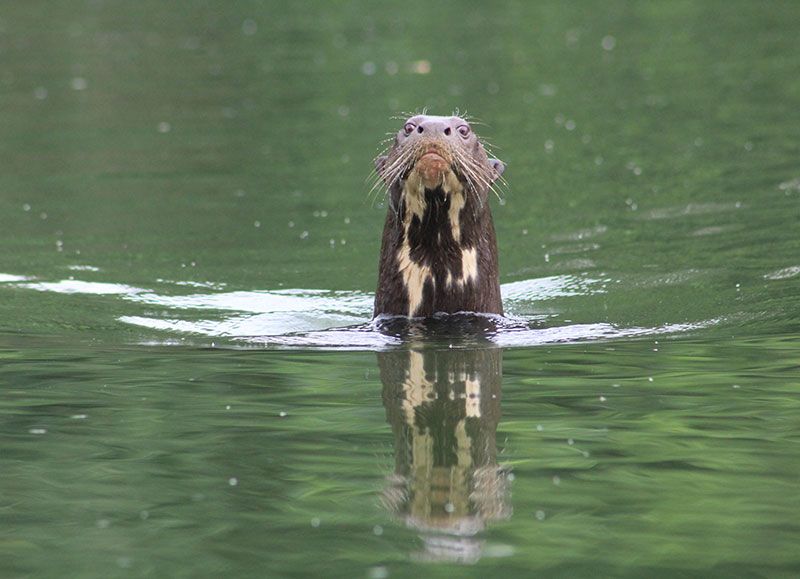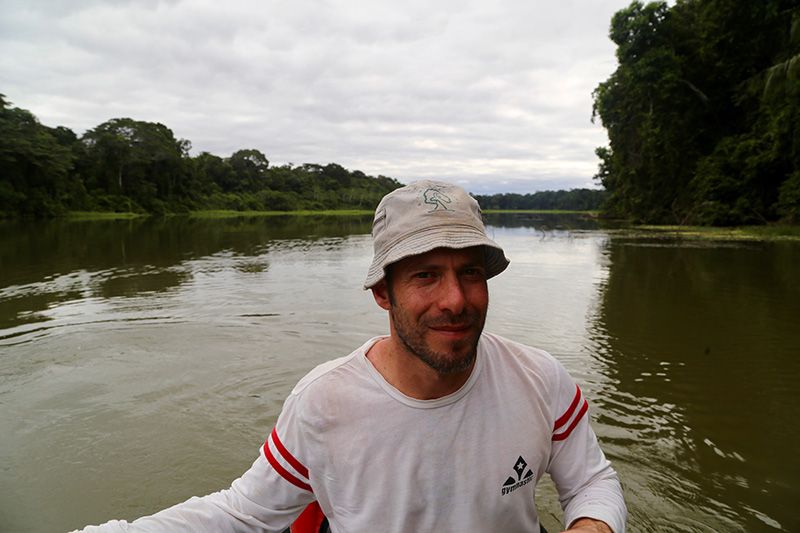Studying in the rain has its challenges
Conducting field research in the tropics is challenging. Working in the Peruvian Amazon during the rainy season, between November and April, is even more so. When I started studying giant otters in the Madre de Dios province a few years ago, I was advised to stick to the dry season.
Amazon aquatic ecosystems experience great seasonal changes. During the wet season, torrential rains can cause river water levels to rise abruptly. The effects of these floods may last a few days. The floods also spill into adjacent water bodies such as oxbow lakes, creeks and swamps. Parts of the forest become flooded.
This can affect our research system in several ways. We prefer to camp on sandy river beaches by the oxbow lakes where we work. When river levels are high, it is more difficult to find good, well-drained campsites. Also, the access trails to the oxbow lakes become muddier and more challenging to walk.
Given these hardships, why should we study oxbow lakes and giant otters in the rainy season?

But where do the giant otters go in the wet season?
Most of what is known about giant otter populations in oxbow lakes comes from research conducted by Jessica Groenendijk and several additional researchers during the 1990’s and early 2000’s. Most of their important work was done during the dry months. Therefore, we don’t know as much about the behavior and movements of giant otter oxbow lake family groups during the wet season as we do about the dry season.
One of the only similar studies is of a Brazilian population that inhabits swamps and rivers in the Pantanal, an area with similar seasonal flooding. Giant otter family groups used larger areas in the wet season and appeared to follow fish into flooded areas.

During the wet season, total wetland areas are larger. Water bodies are more connected, and fish can move between them more easily. As predators who mostly rely on fish, giant otters should follow the movement of their prey. If this is true, giant otters may spend less time in areas which otherwise are the cores of their territories.
So far, the giant otter team completed two successful field trips during the rainy months of November and December of 2017 and 2018. The team recently returned from the third such trip.
This year, after surveying all oxbow lakes again during November and early December, we found a total of nine family groups, only two of which were in the gold mining zone. For comparison, 14 giant otter groups were found in the same areas during the dry season. Our results await more rigorous analysis using occupancy models, but the pattern of lower probability of finding otters, especially in the gold mining zone, during the start of the wet season is consistent.
Knowing how likely giant otter family groups are to be found in oxbow lakes that constitute the cores of their territories can be important for their conservation.
If giant otters move more during a certain time of year, it is possible that management efforts only for oxbow lakes may not be enough to secure their protection. It may be necessary to also protect rivers and flooded areas in their vicinity.
Thus, our research results may be crucial to protect the little that is left of untouched giant otter habitat in the gold mining zone, and to understand the effectiveness of aquatic ecosystem conservation in adjacent protected areas, such as Manu National Park. If this can be achieved, facing the rain, mud and river floods will have been worth it.
By Dr Adi Barocas
Learn more about this project:
